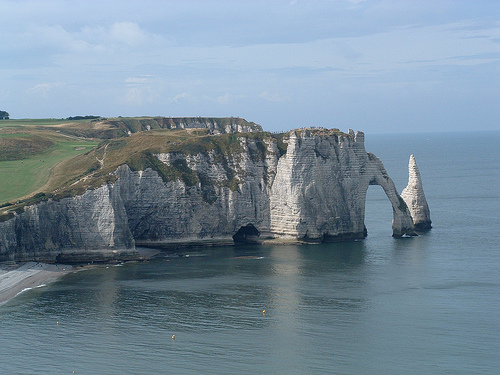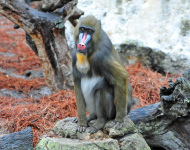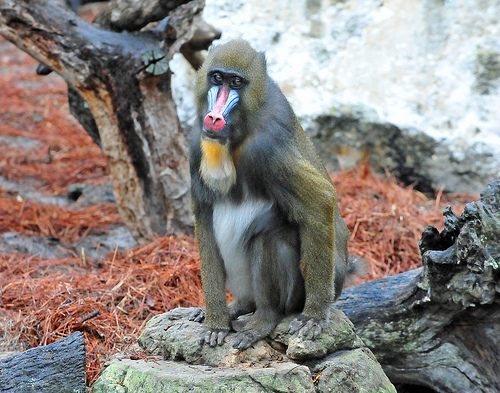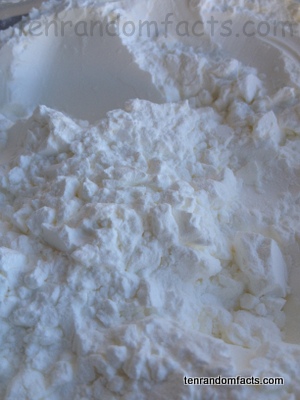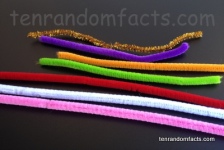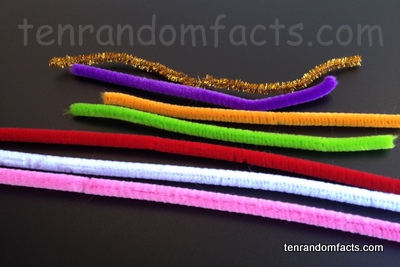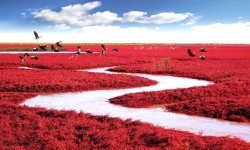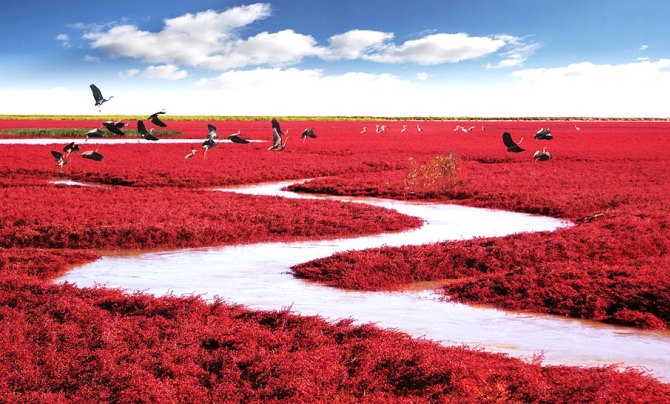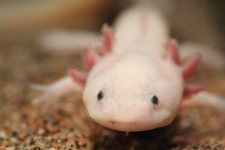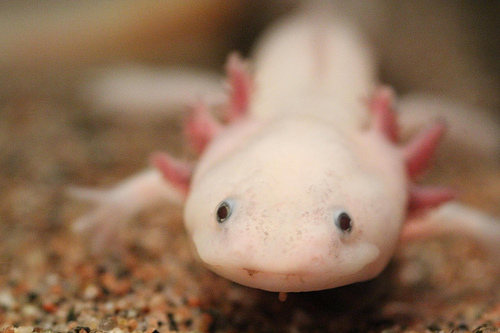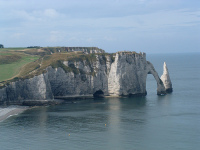
The white coloured cliffs of Étretat are very picturesque.
- The cliffs of Étretat are numerous sea cliffs and rock formations located in Étretat, Upper Normandy, in Europe’s northern France.
- The cliffs of Étretat are a common site visited for inspiration for both literature and art purposes; while notable visitors have included Victor Hugo, writer of ‘Les Misérables’, and famous artists like Claude Monet and Gustave Courbet.
- The cliffs of Étretat are part of a stunning coastline along the English Channel, known as ‘La Côte d’Albâtre’, ‘The Albâtre Coast’ or ‘The Alabaster Coast’ that spans a distance of approximately 130 kilometres (80 miles), and is virtually a long wall of cliff.
- The cliffs of Étretat are at least 70 metres (230 feet) high and are primarily coloured white to a light grey colour.
- The cliffs of Étretat is one of the most popular tourist areas along the Alabaster Coast, as it is home to a 50 metre (164 foot) high needle-shaped rock formation, named the ‘Needle’, as well as three large natural arches and a beach area.
Part of the Cliffs of Étretat
Image courtesy of Frenlarreo/Flickr
- The cliffs of Étretat mostly contain chalk and limestone, as well as flint, with the chalk giving the cliffs their vivid white colour.
- Water sports are popular at the cliffs of Étretat, and due to strong winds atop the cliffs, air gliding is a common sport performed in the area.
- The cliffs of Étretat were formed primarily by erosion from wind, rain and ocean waves, and coastal erosion is still significant due to the soft chalk.
- The cliffs of Étretat are the home to seagulls, and the ocean area was once a prime fishing spot and was also used for oyster farming.
- The cliffs of Étretat are situated next to the fishing village of Étretat, which has become a popular tourist destination and tourism has become one of the main sources of income in the area.
Bibliography:
Beautiful Heights, Sea Cliffs, Etretat, France, 2014, Planet Den, http://planetden.com/nature/beautiful-heights-sea-cliffs-etretat-france
Cliffs, n.d, Etretat, http://www.etretat.net/office-de-tourisme-etretat/modules/content/content.php?page=falaises&lang=en
Étretat, 2014, Wikipedia, http://en.wikipedia.org/wiki/%C3%89tretat
Vallois T, Normandy’s White Cliffs, 2012, France Today, http://www.francetoday.com/articles/2012/08/04/normandy_s_white_cliffs.html





